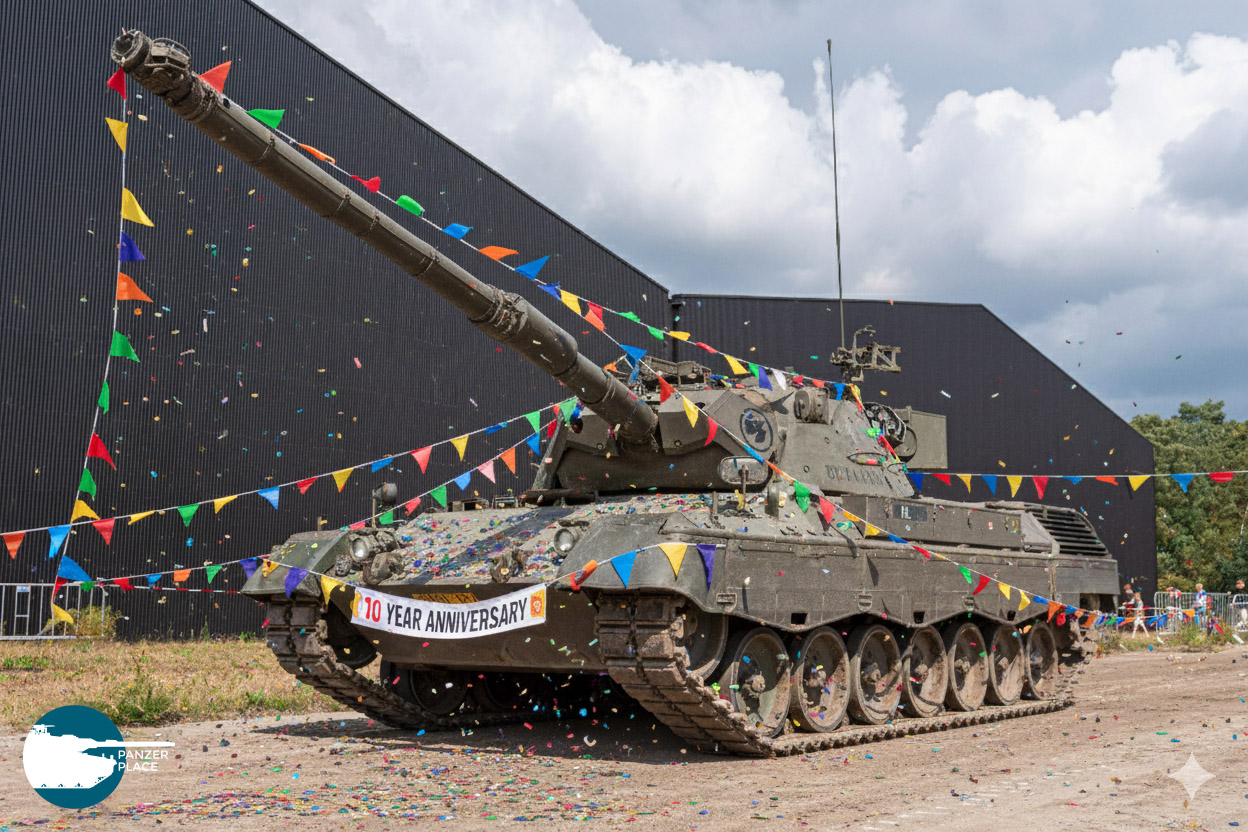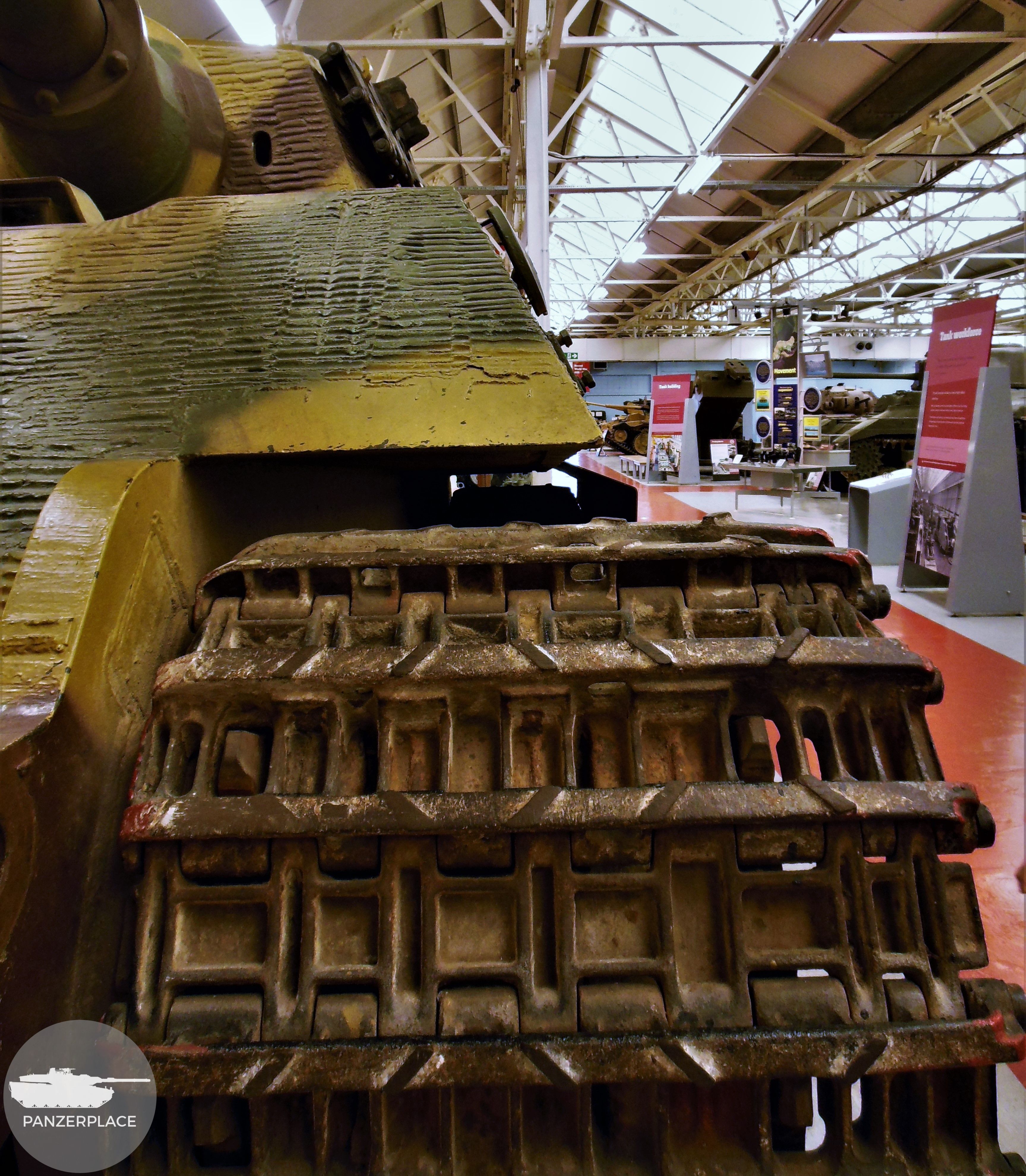Musee de Blindes houses the only Tiger II still running today and they’re pretty proud of that. Even though by design this monster is hardly suitable to run for long marches the museum was able to keep this specimen running even after some 74 years after it first left the factory. Last weekend, the vehicle travelled to the Netherlands where it partook in the Militracks show at Overloon. Last summer I visited the tank in Saumur.
First things first, the Tiger II was essentially a painfully heavy hulk of armour designed to withstand anything the allied could throw at it. A cut-out of a piece of the Tiger II’s glacis plate shows the extremely thick (150mm) armour plate which would normally be angled at 50°.
The Tiger II was powered by exactly the same engine as the Tiger I, the Maybach HL 230. The HL 230 packed a good amount of power for its footprint, but was overtaxed in the Tiger II to say the least. Maybach was working on a successors that delivered more horsepower, but these would only reach series production until after the war.
To maintain the gearbox and steering gear, Saumur had been in contact with a former Maybach employee, M. Burr. The Olvar gearbox was last overhauled on 24 October 1979 for General Aubrey – the founder of the Musée de Blindés. After Burr passed away, however, the steering broke down. Ever since the steering of the vehicle is said to have been pretty rough and the steering wheel is out of order.
The vehicle must now be steered by actuating the steering rods – which activates the Lenkbremse (steering brake) on a track to steer the tank in the respective direction. This rather primitive method of clutch-brake steering is normally a good solution for light tracked vehicles, but in the case of a Tiger II weighing in about 70 tonnes this method puts a lot of strain on drive train components. Rather than transferring excess power to the track on the outside of the turn, power is dissipated through heat generated by braking the track on the inside of the turn. Altogether, running across loose ground such as sandy terrain is a big no-no for this vehicle nowadays as the risk of damaging the drive train is far too big.
You can tell this vehicle has been driving around on asphalt full-time after a brief glance at its tracks. Miss anything on the tracks? The Profilstollen (diagonal profile studs) on the Griffleiste (tracks bars) have completely worn off. Below is a comparison of the tracks on the Saumur and Bovington Tigers which clearly shows the wear and tear on the tracks.
The vehicle in Saumur features the much simplified Serienturm distinguishable by its blocky shape. Often times this turret is also referred to a Henschel design turret a so called alternative to the Porsche design turret. These names, however, are the result of a misnomer by Spielberger in his otherwise great book Panzer VI Tiger und Seine Abarten. In reality the Krupp firm made both designs and the Serienturm was only a simplified successor of the too complicated turret that was first designed to fit Porsche’s VK 45.02. Since 50 armoured bodies for the initial turret had already been produced, it was decided to convert them for use with Henschel’s winning design: the Tiger Ausf. B. Below you’ll find some shots of the Serienturm.
More images of my walk-around will be posted in the second part. Stay tuned!















Leave a Reply